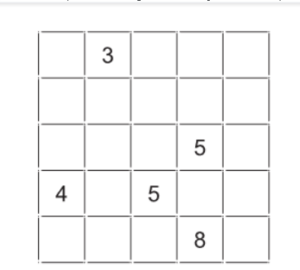1.In an area of forest measuring 100 m by 100 m, samples were taken to estimate the number of silver maple (Acer saccharinum) trees in the forest. The number of trees counted in each of five areas of 400 m2 was recorded.

Approximately how many silver maple trees are in the 10000m2 area of forest?